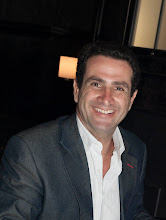The origin of Taormina's name came from the Tauromenion (Greek) that is the shape of Taurus. Seems that the Sicilian, to which Dionisio of Syracuse had previously granted the earth around Naxos, had occupied Monte Tauro in the years of the Olimpiade of the 396 a.C. But the tyrant of Syracuse wanted to resume with violence the granted territory. Taormina remains under the tyranny of Syracuse until the domination of Rome, in the 212 a.C
Attractions:
The greek-roman theatre Going back probably to the III century a.C., the greek-roman theatre of Taormina is sure the largest in Sicily, after that one of Syracuse. It's supposed that it was built by the Greeks Tauromeniti and later re-built by the Romans. The greek-roman theatre is divided in three parts: the scene, the orchestra the cavea.
The scene is that part where the actors go on show. It has six bases of columns and four columns of corinzio style are.
The cavea is formed by the gradinate that left from the bottom and went salting towards the high where took place the spectators. The steps of the gradinate were dig in the cliff.
The orchestra is the flat part of the theatre. Here the singers were placed to develop the tragedy or the commedy where the actors recited.
Palazzo Corvaja Palazzo Corvaja was realized during the Arabic domination in Taormina. In fact its structure has in its base a tower that remembers the" Arabs the sacred"- “ Ka `bah”. It's the dice that, according to Maometto, was the first temple raised to God from Abrham to La Mecca. The palace was realized in the beginnings of 1400 in order to allow the reunions of the first sicilian Parliament of 1411. Currently Palazzo Corvaja is the center of the "Etno-anthropological" Museum in which are exposed objects from the art and traditions of the period comprised between the XVI and the XIX century.
The Dome The Dome was erected in the XIII century, but many of its structural members were added later on. It is the case, as an example, of the portal on the left flank that laughed to the ?400, and the ghotic style portal that laughed to the '500.
The park Column The park is property of the common from 1923. In its inside, there are not only native plants like carob trees, olive trees and almonds tree, but also plants coming from the exotic parts of the austral hemisphere, i.e. the Araucaria, the Calliandra and the Bahuinia.
Fluvial park of the Alcantara Taormina makes part of this protected area, but it is opened also to the Ionian see and dominates an immense landscape beyond the Etna. In the territory there are immense citrus groves. The beauty of this places make it a privileged center for the tourists.
Typical Products The typical products of Taormina are those diffuse in the zone comprised inside of the Etna park. Blue fish is however impossible to renounce too.
Festivities and events In the city are organized a lot of manifestations all the year. The most known are the Taormina film festival and the Taormina Art. They regards also music and theatre, in fact, in the summery months inside of the Greek theatre and the communal villa are organized numerous shows.
Book your Accommodation In Italy
Thursday, October 18, 2007
Taormina Attractions
Subscribe to:
Post Comments (Atom)





No comments:
Post a Comment